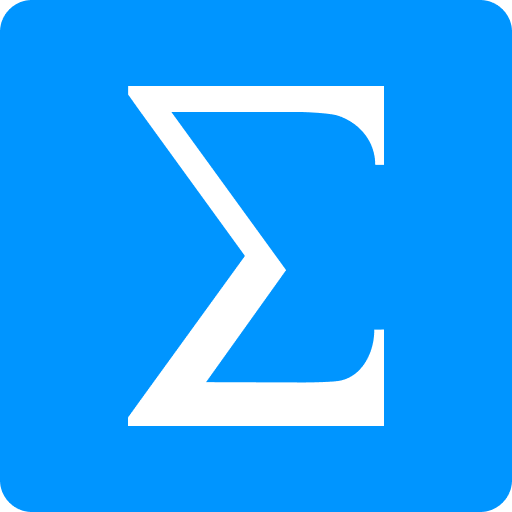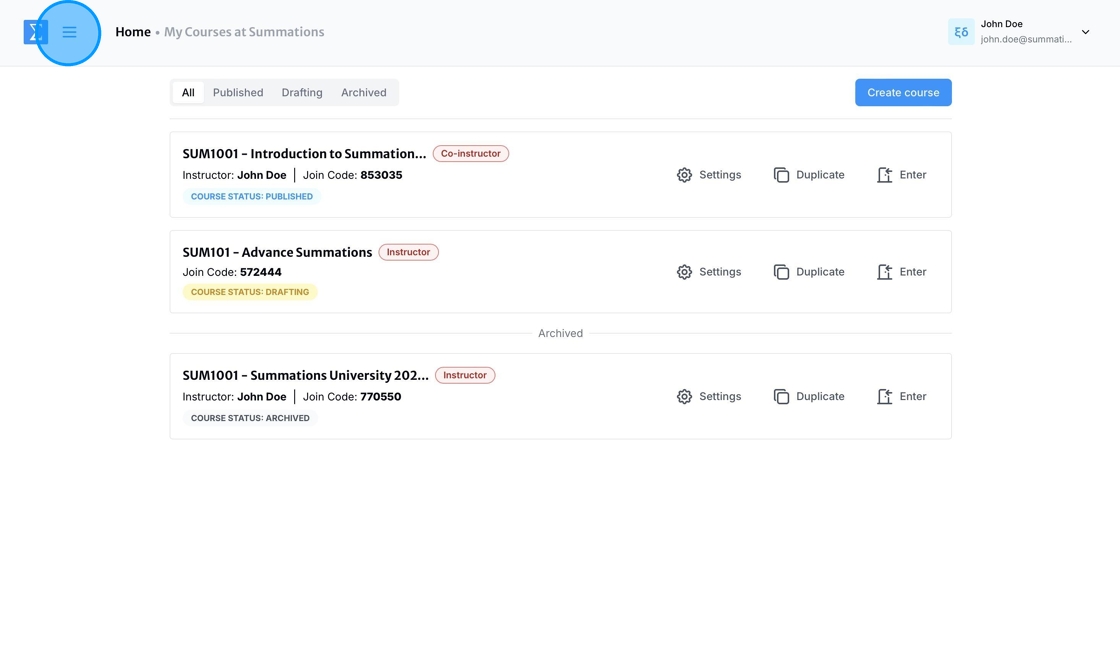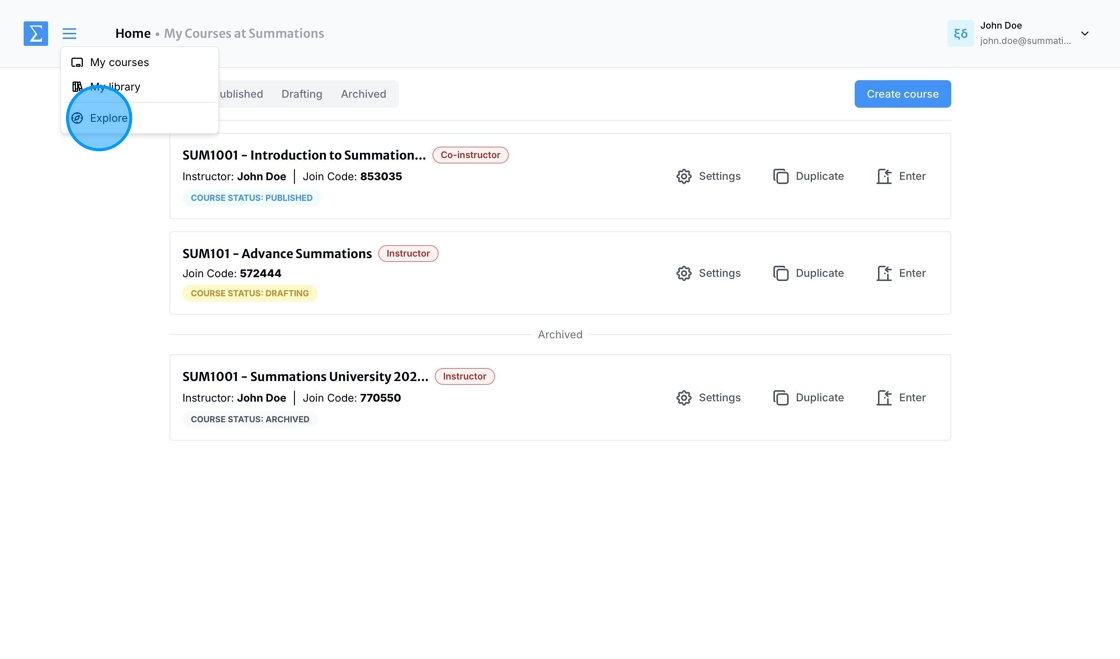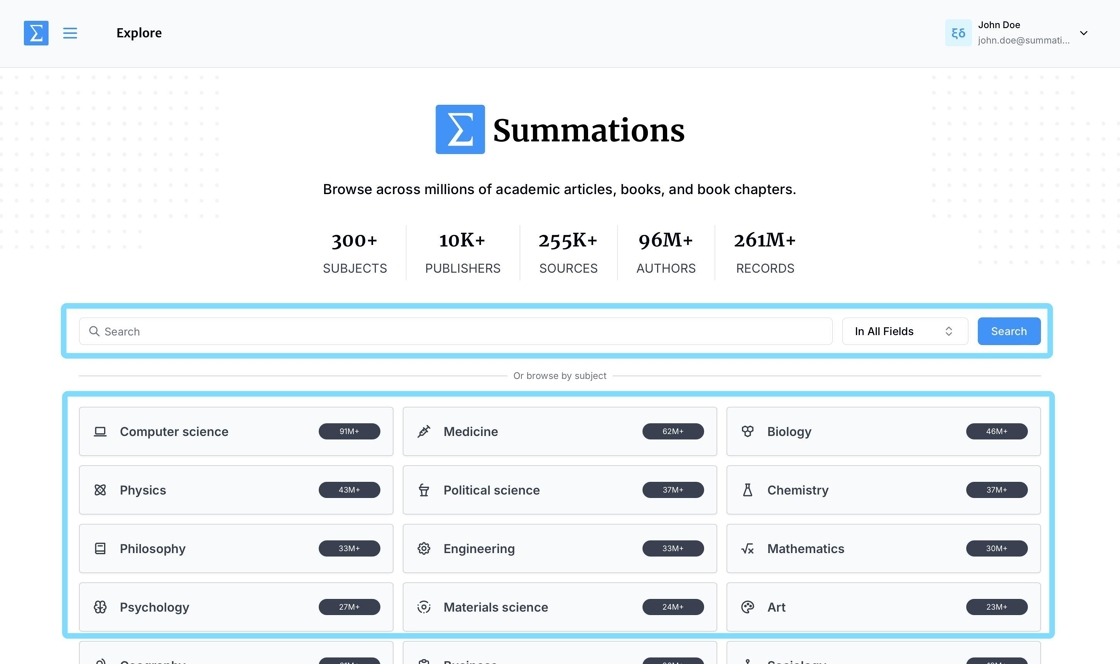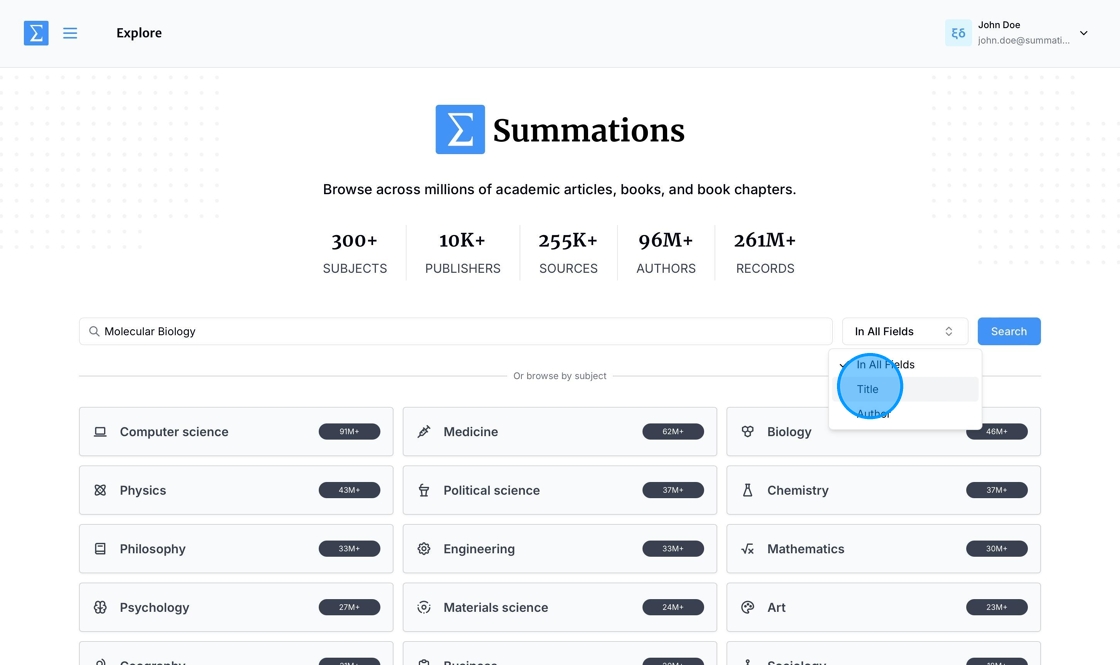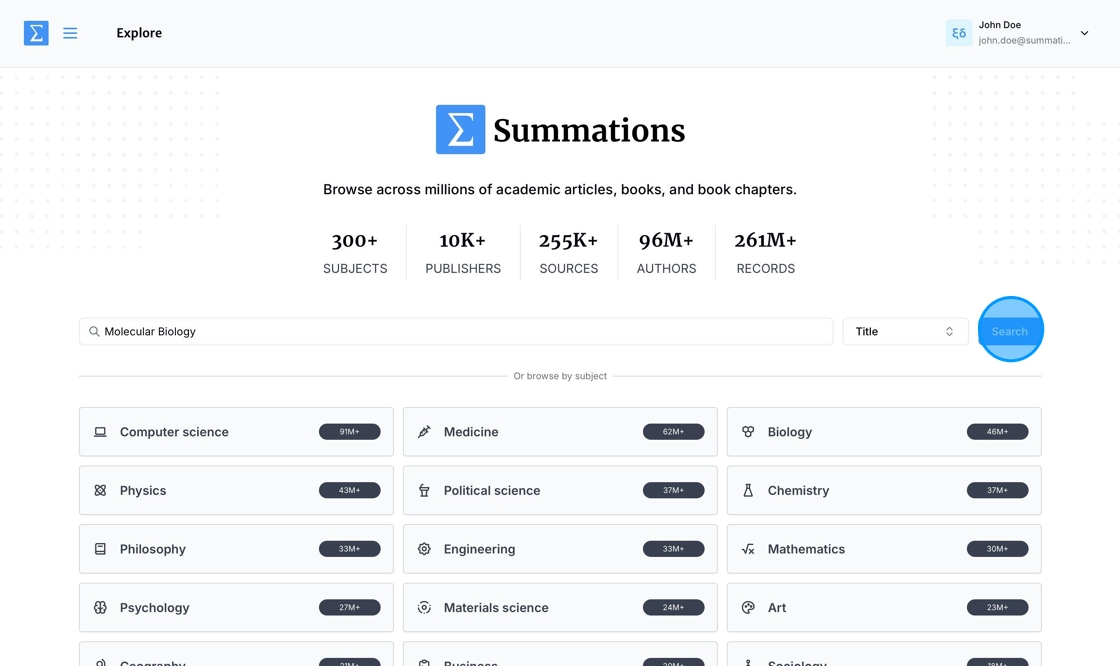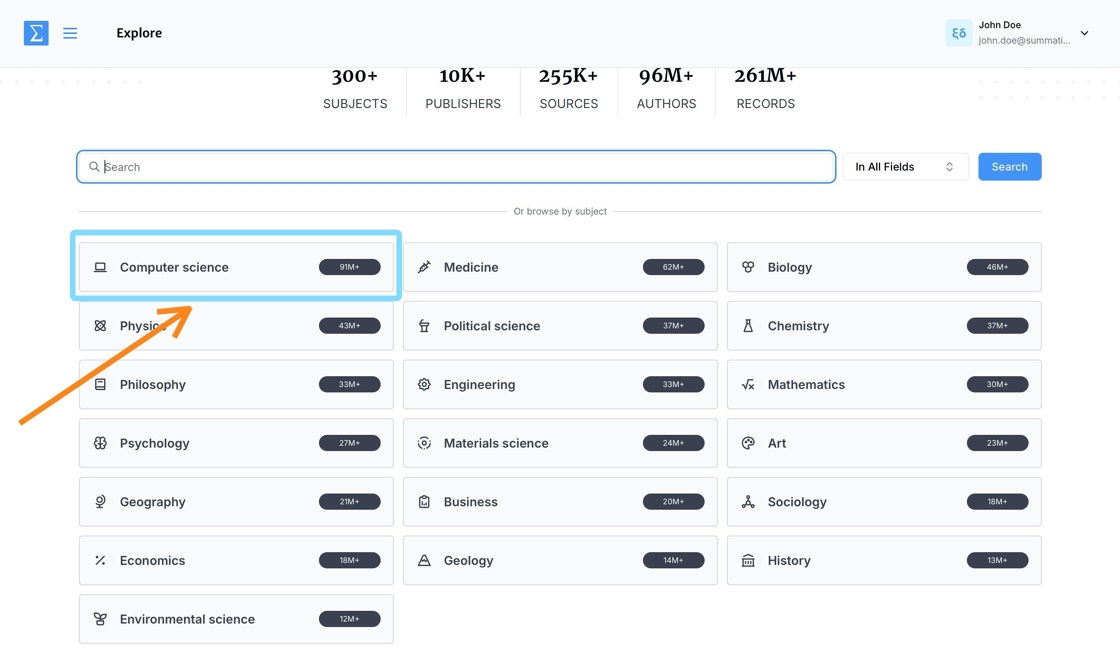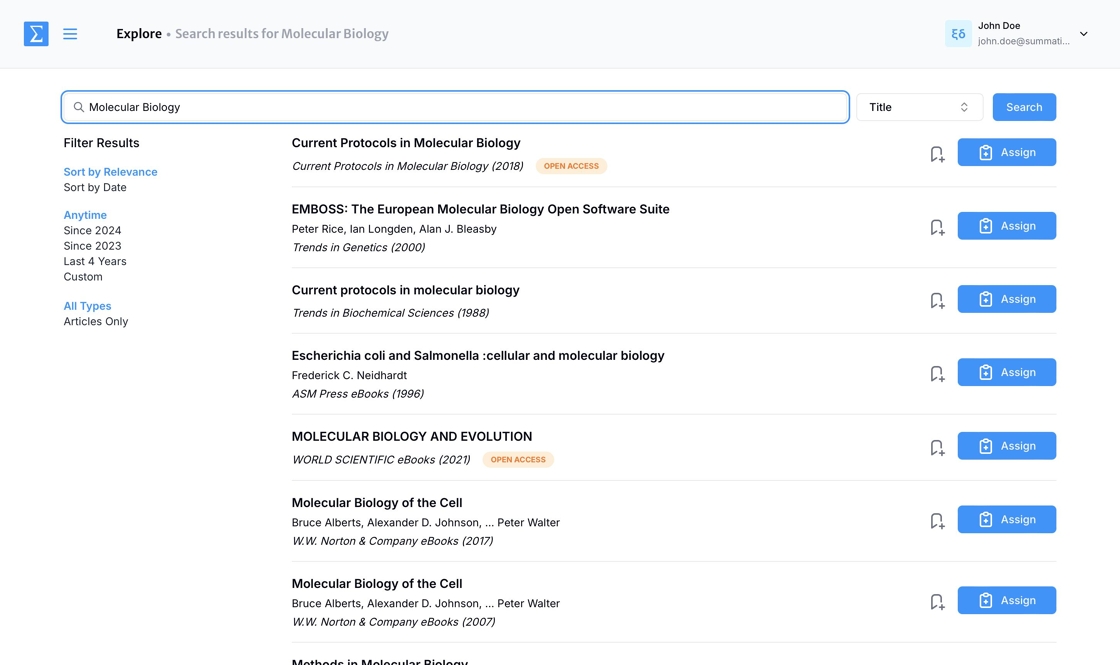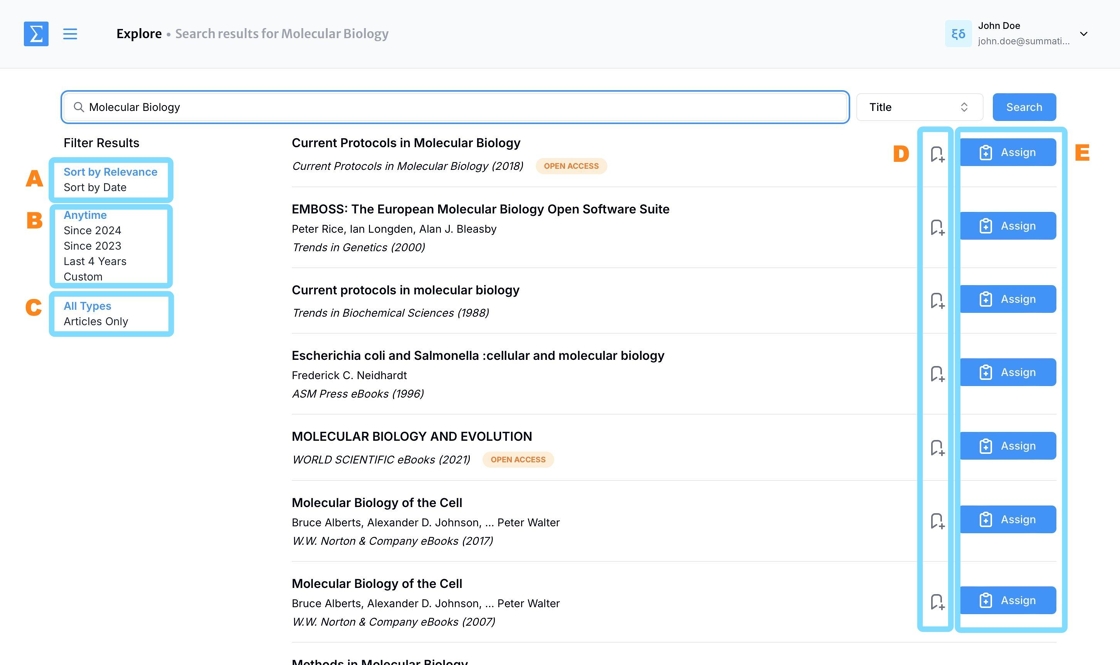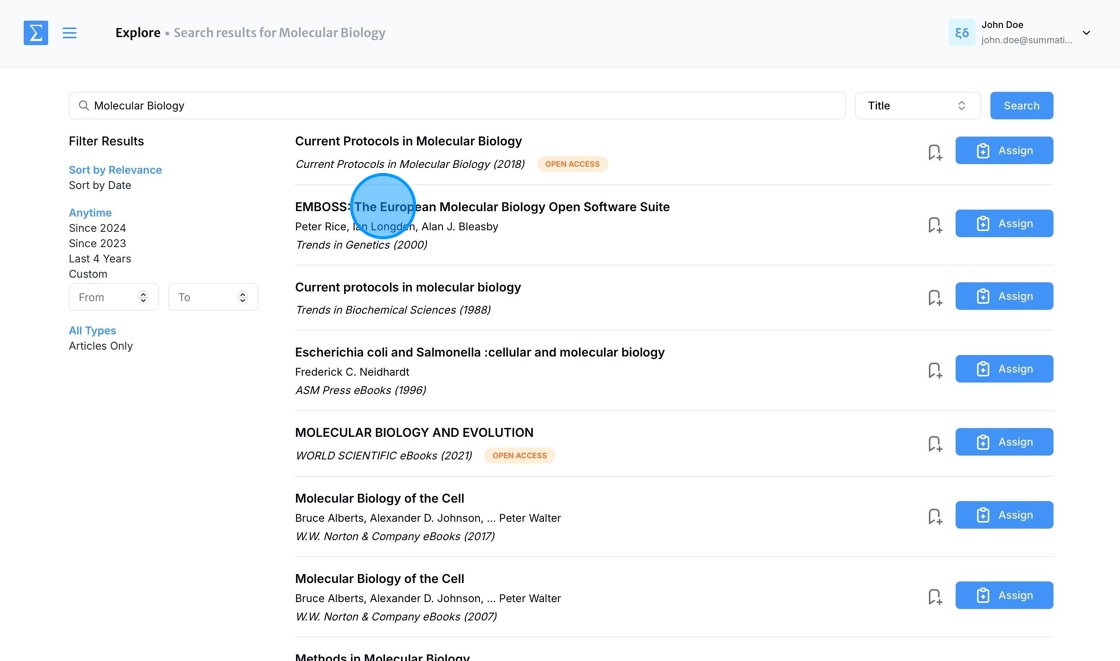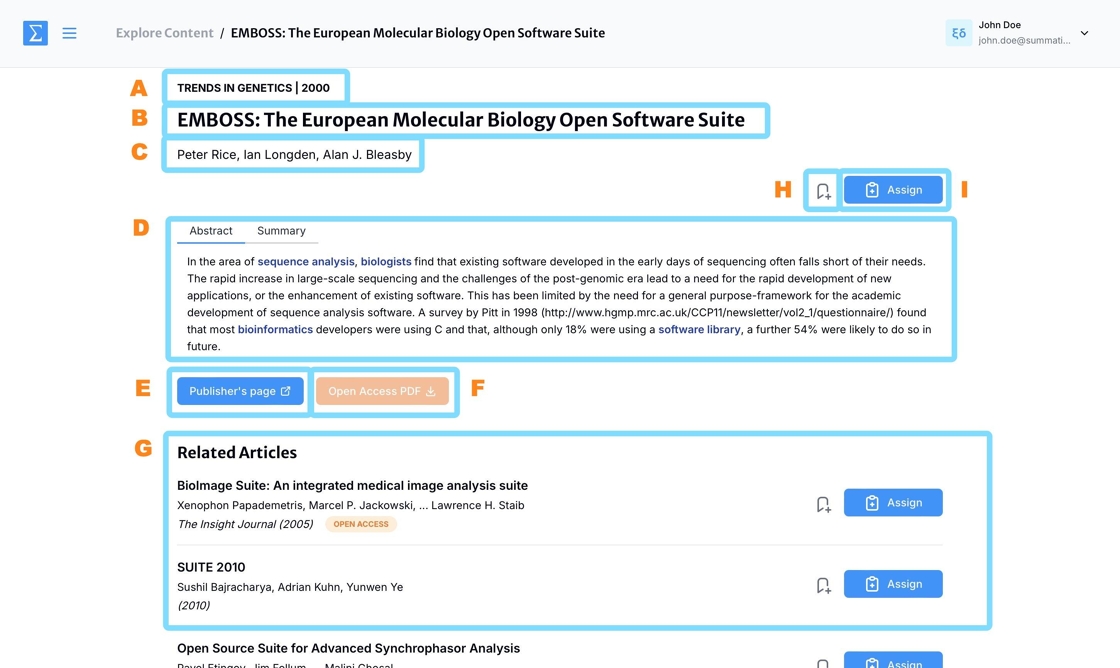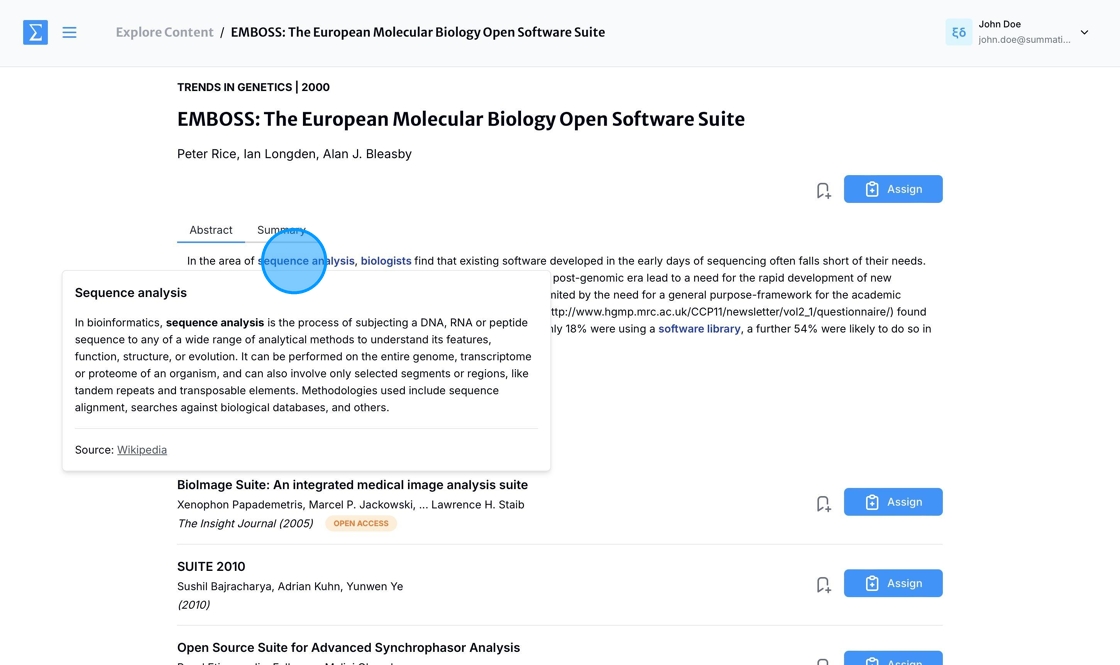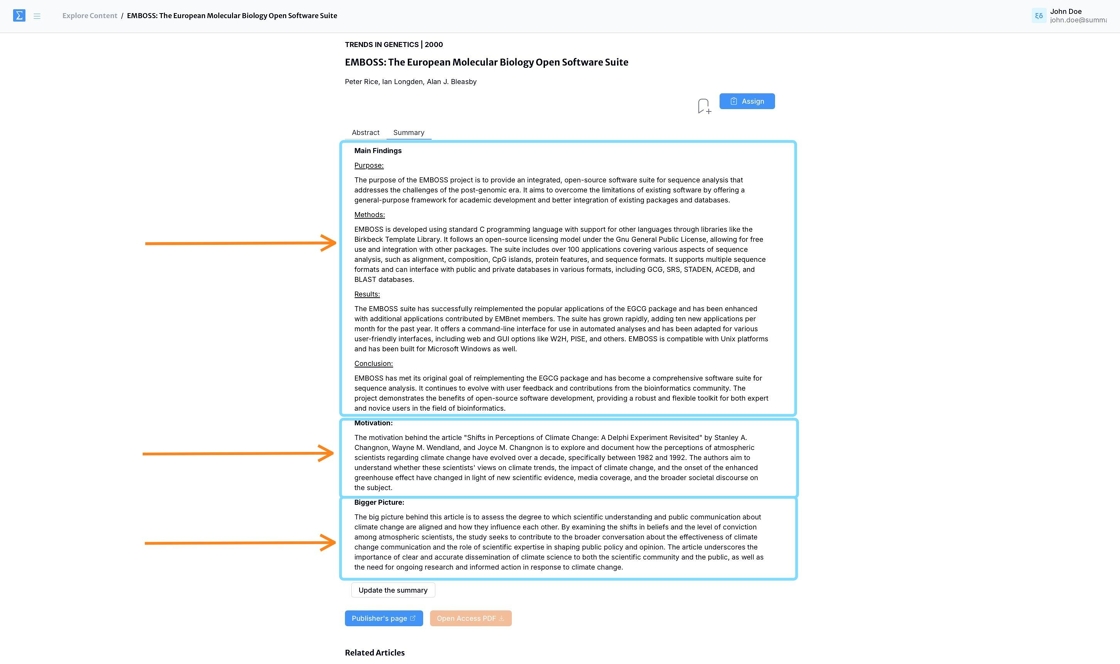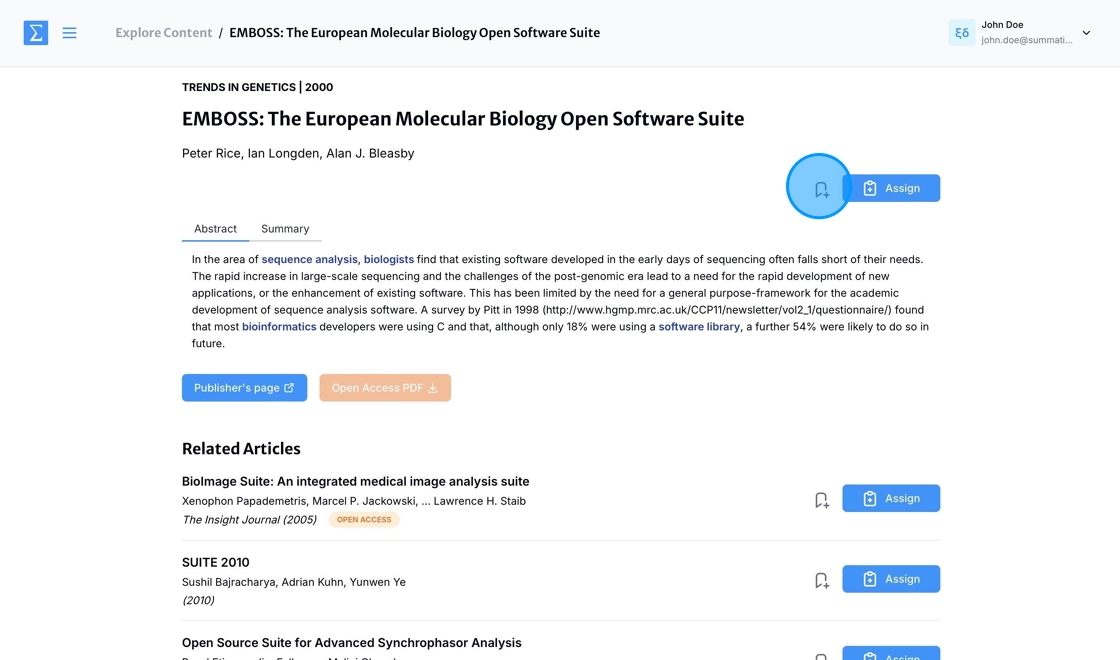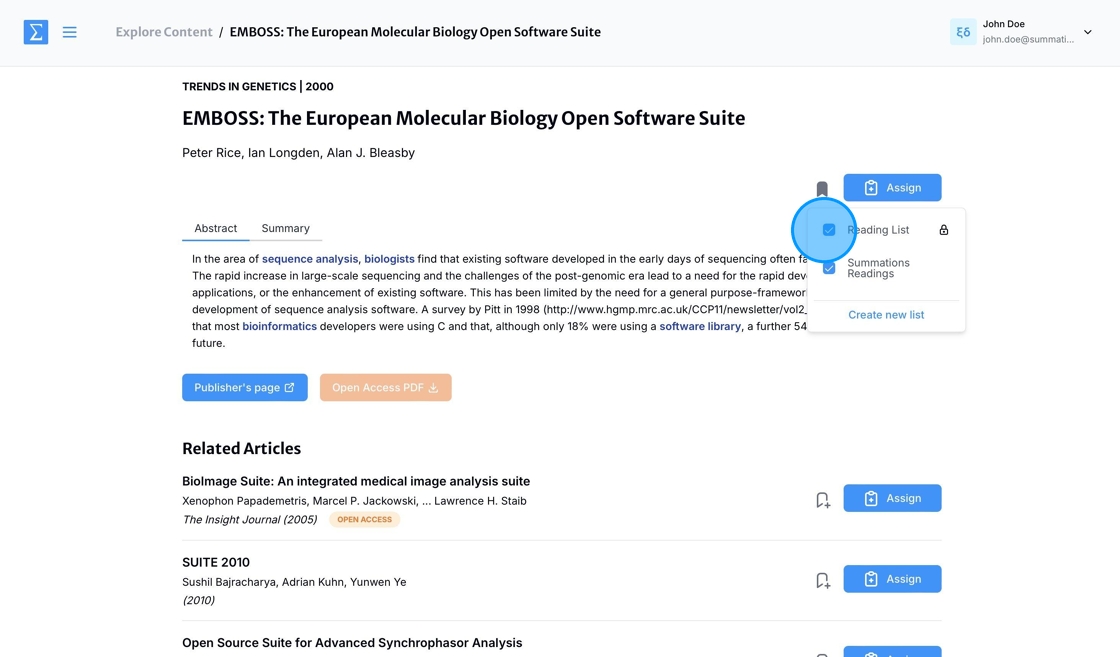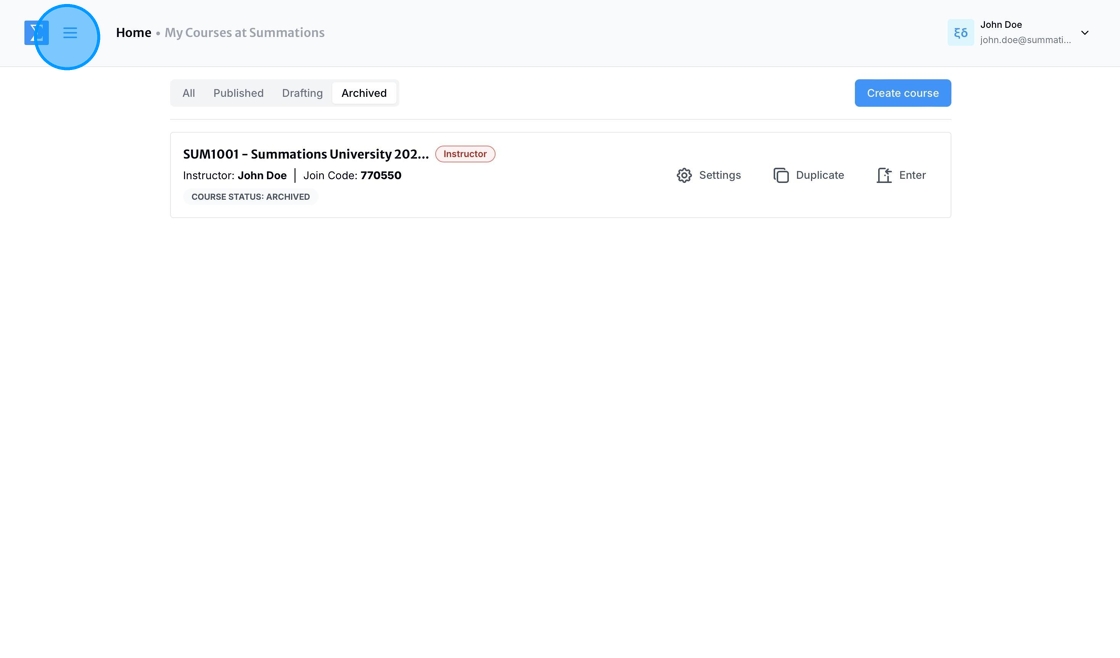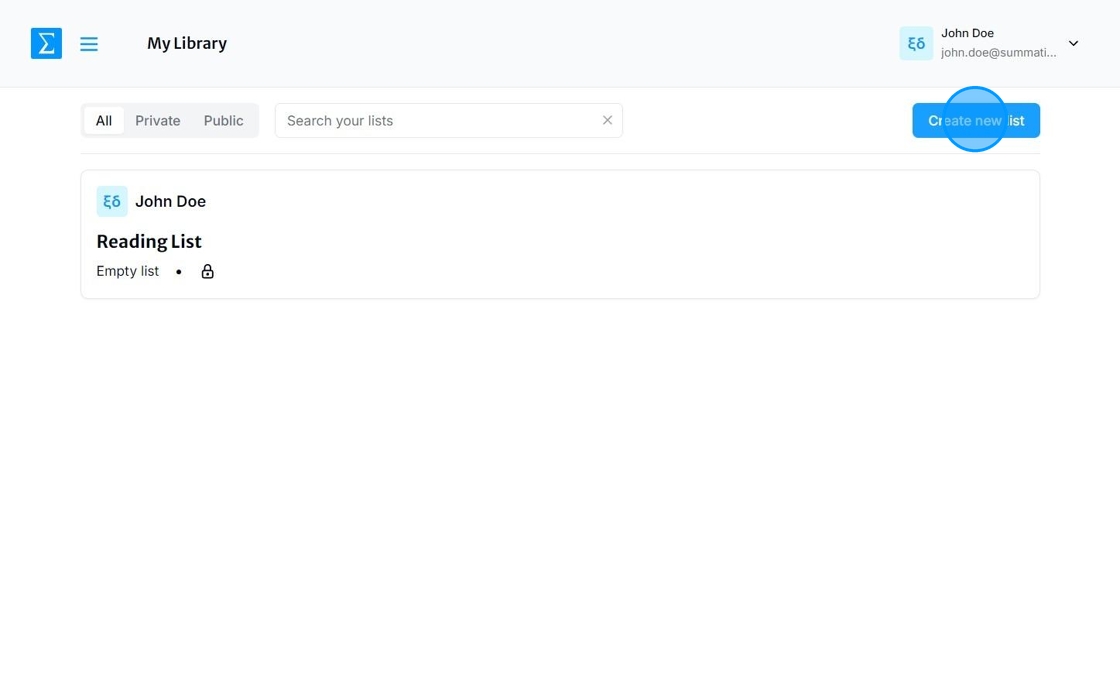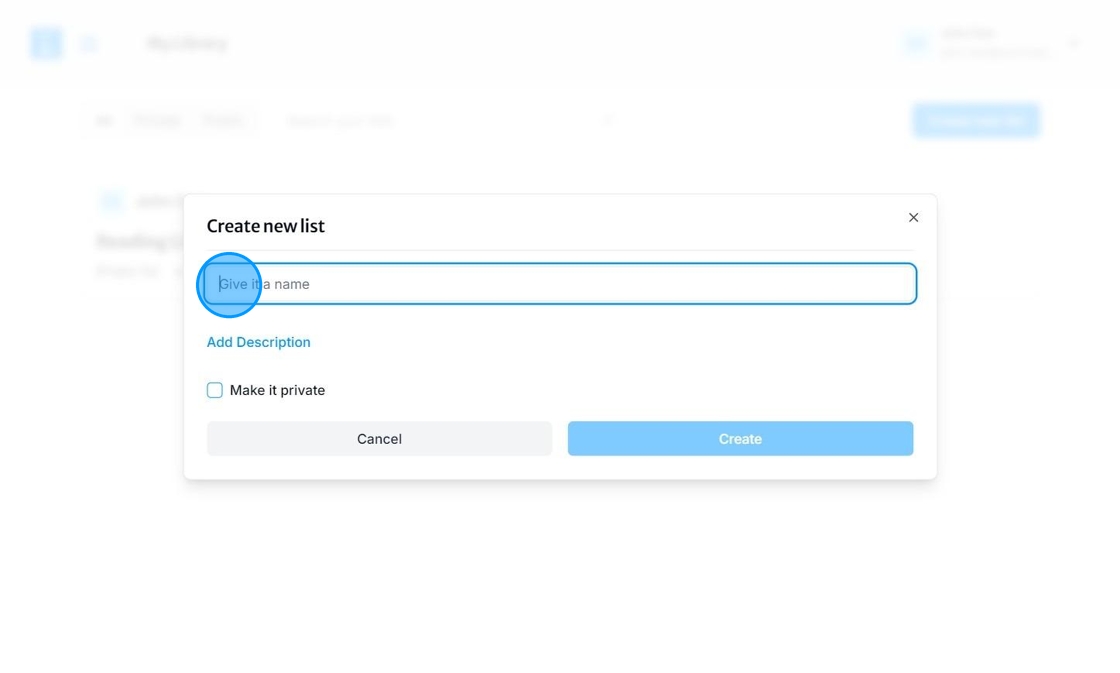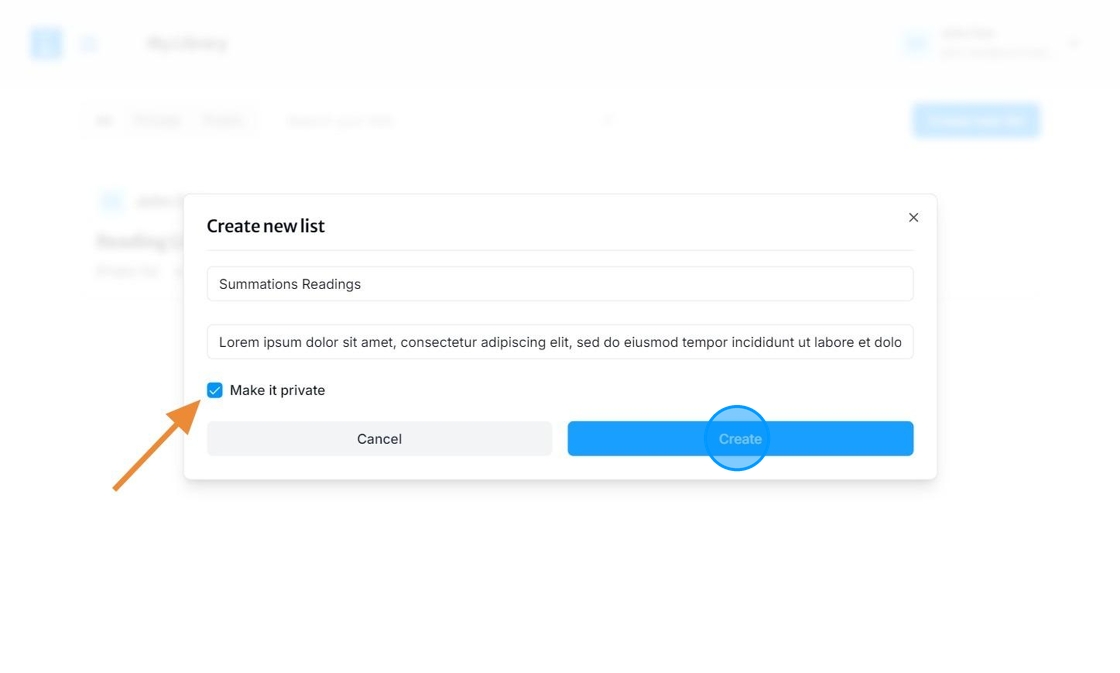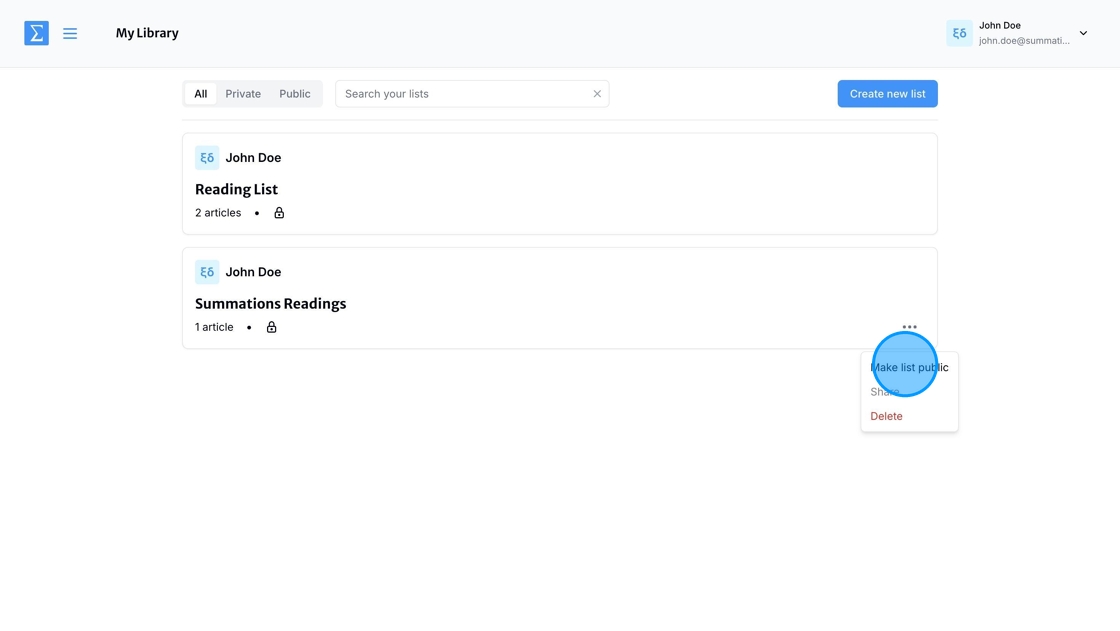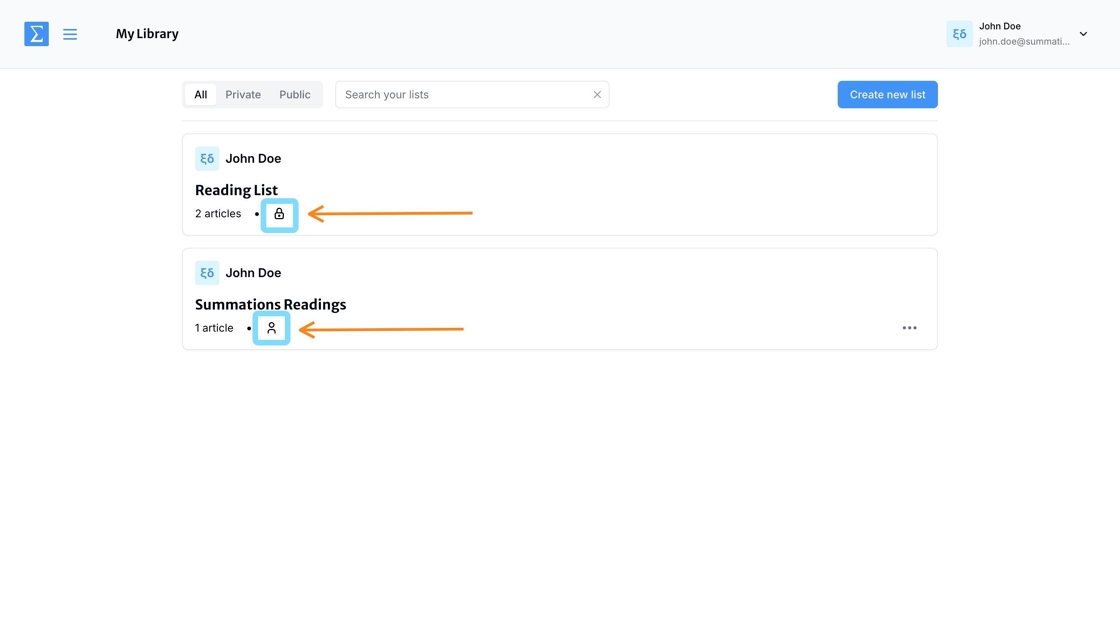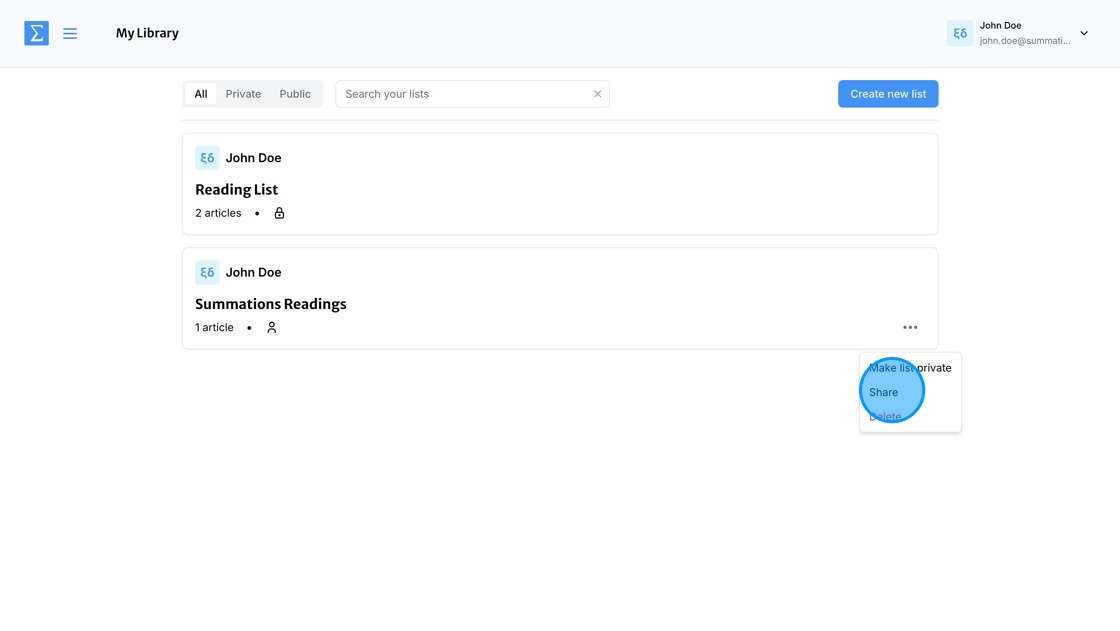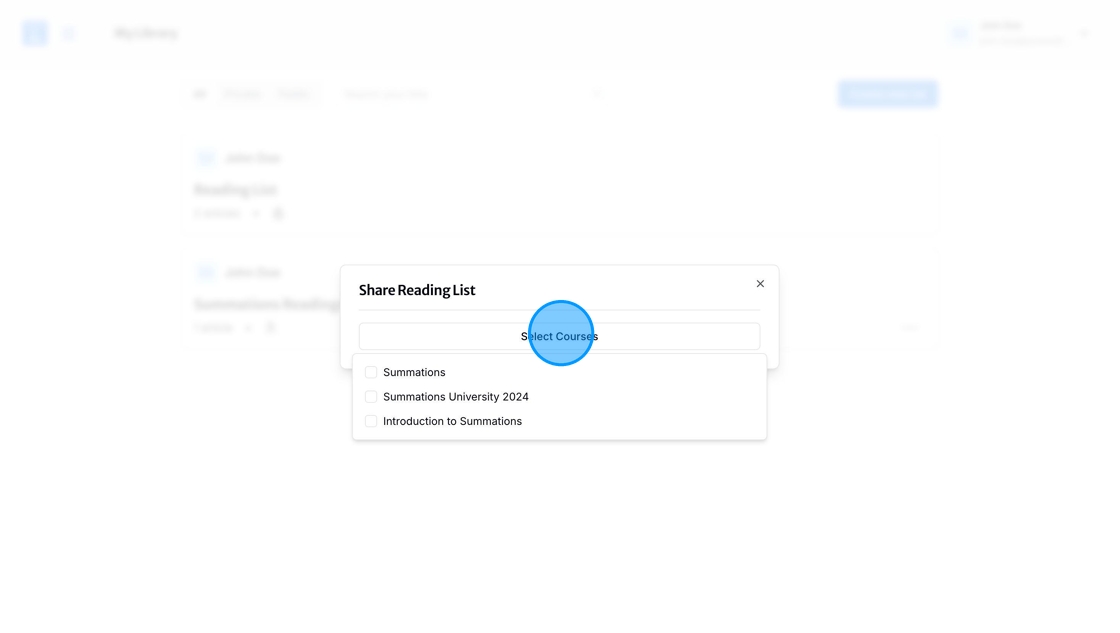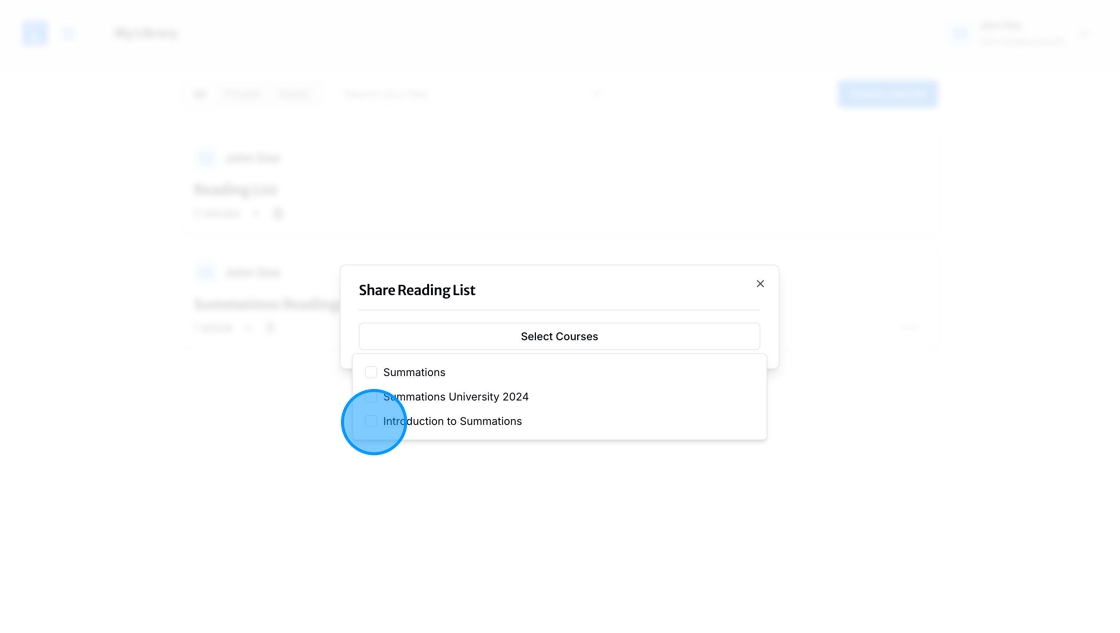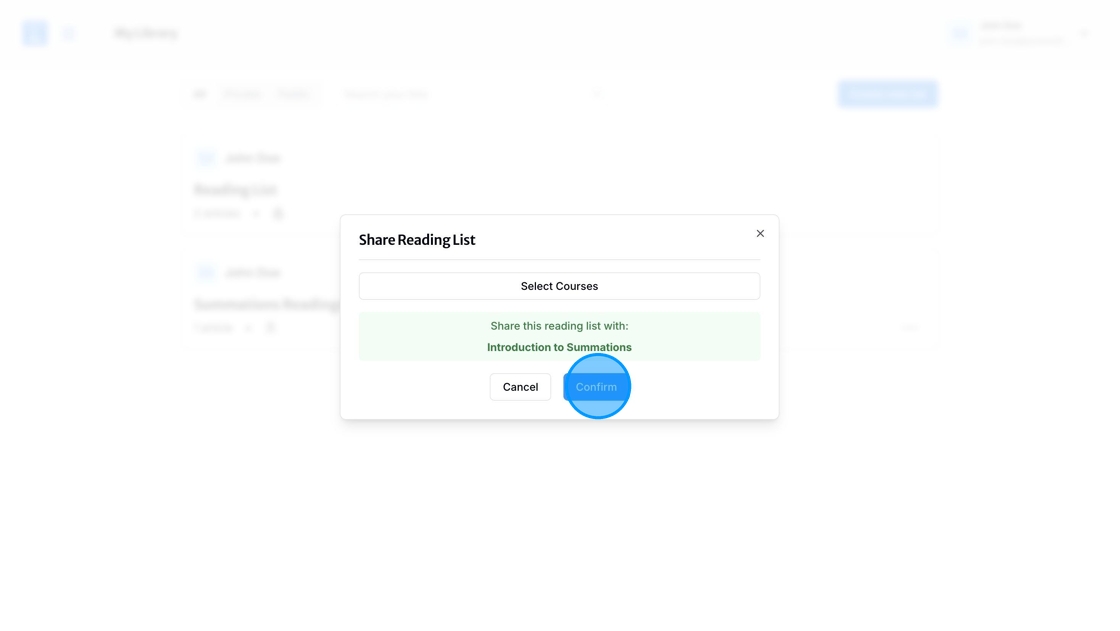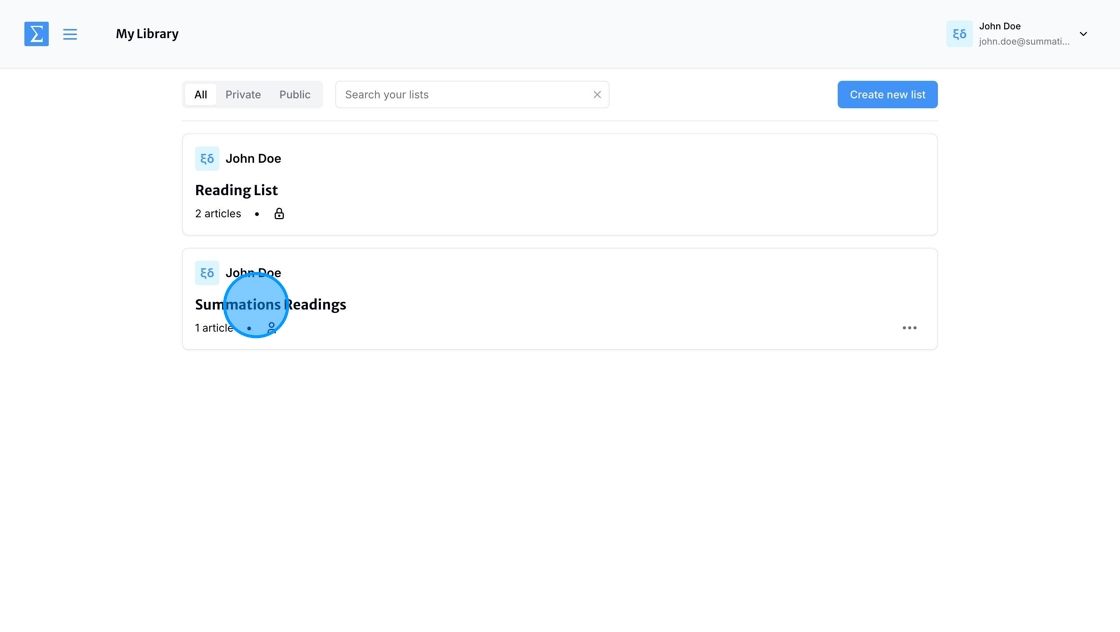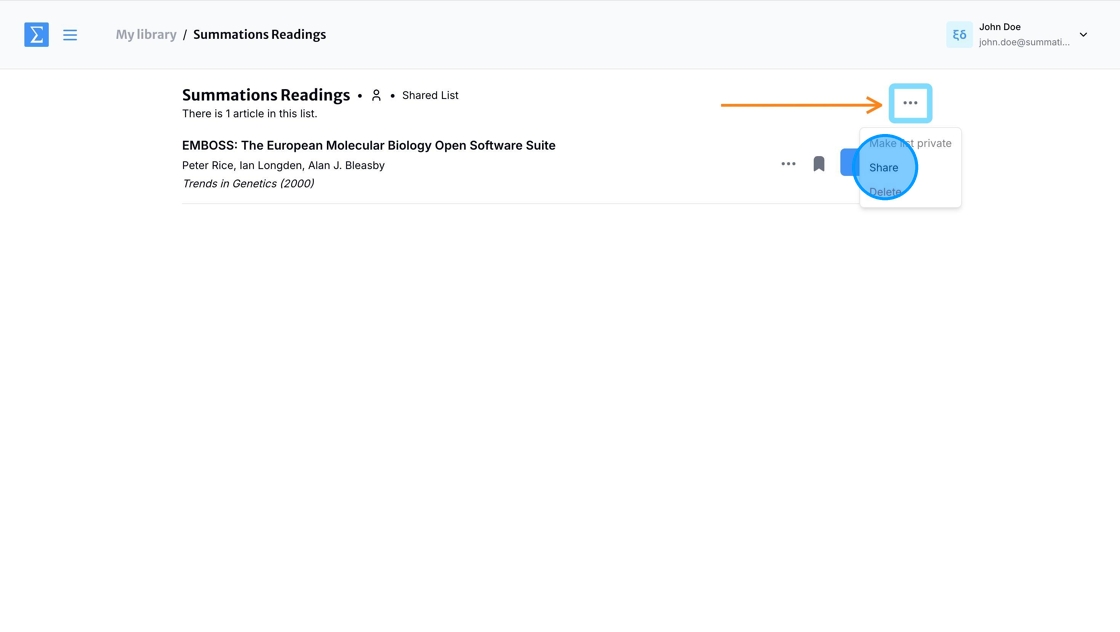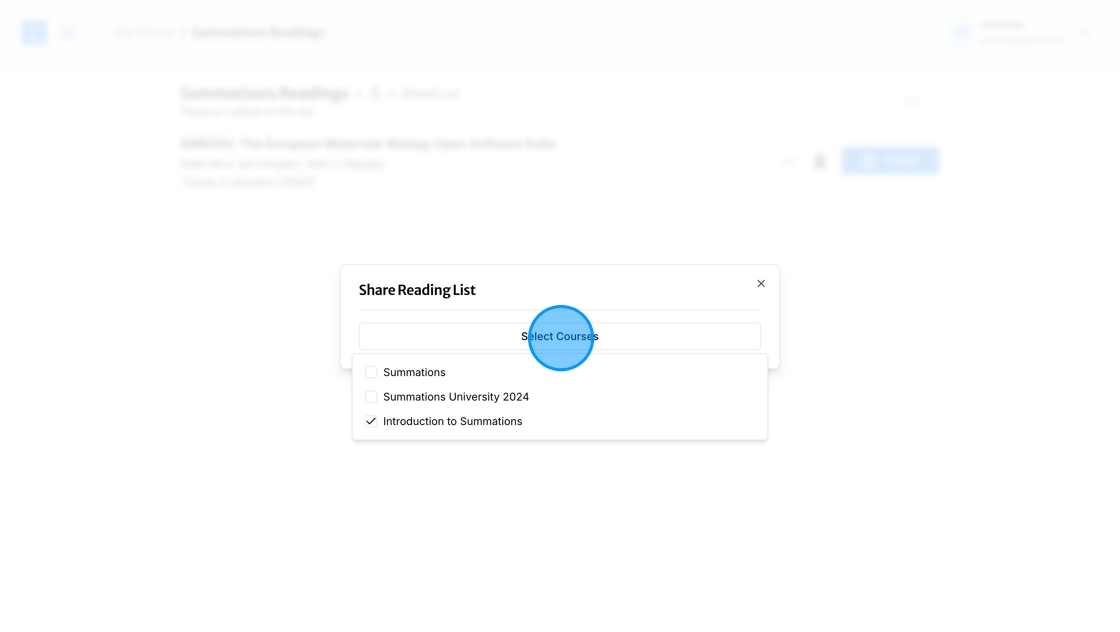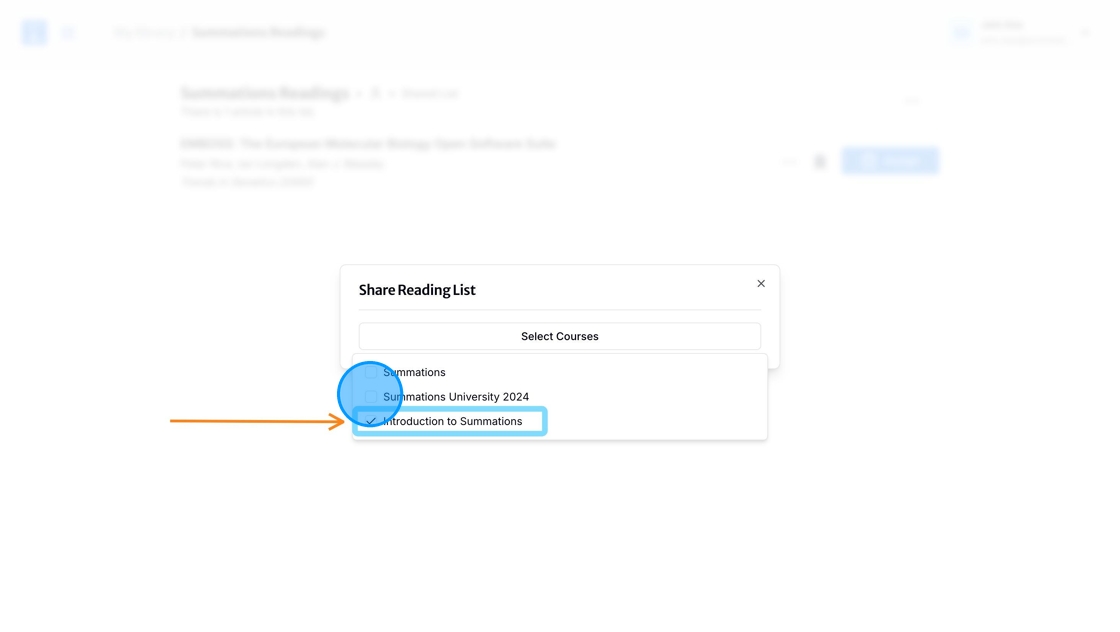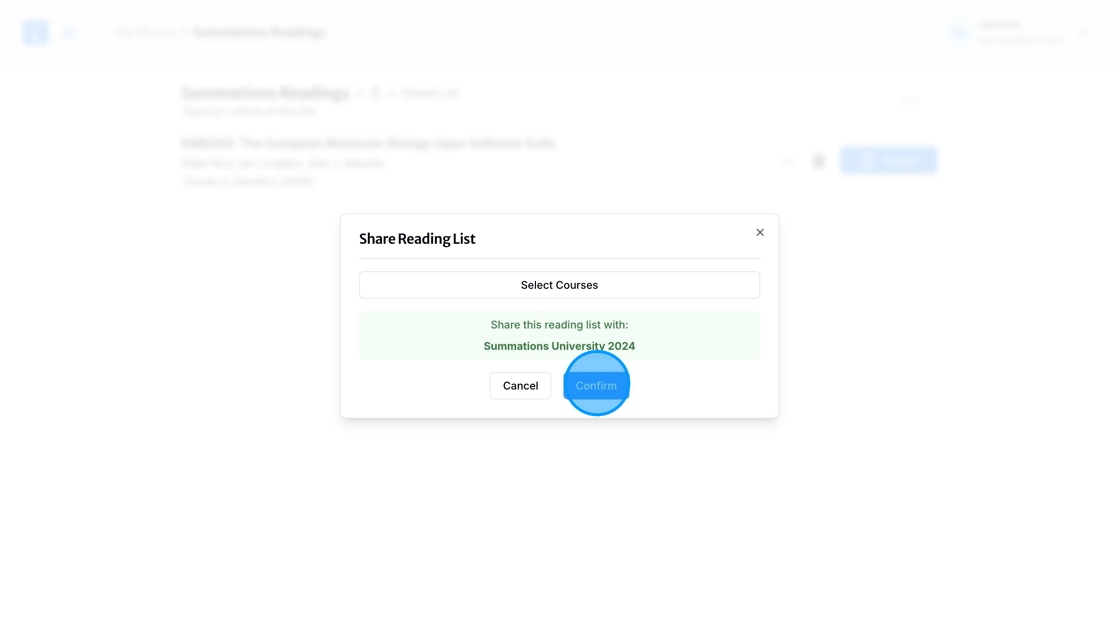Navigating Summations Resources
Summations Resources offers access to millions of credible sources through Explore page, including articles and readings selected by instructors across thousands of courses at Summations. These resources are also carefully curated by our team of instructional designers.
My Library complements this extensive resource pool by providing a personalized space for managing the materials you’ve curated for your courses. This feature serves as a central hub where you can access saved readings, organize them into lists, and assign them directly to your courses.
Below is a step-by-step guide to help you use Explore and My Library effectively.
Explore
To explore credible resources for your course, including articles and readings selected by instructors from thousands of courses at Summations, as well as curated by our team of instructional designers, navigate to the Main Menu and select 'Explore.'
Click on 'Explore.'
On the 'Explore' page, there are two efficient ways to find the right resource: using the search bar or browsing by subject.
The Search Bar is ideal if you know specific keywords, titles, or authors related to the resource you need. By typing in targeted search terms, you can quickly locate precise materials, saving time when you have a clear idea of what you're looking for.
In contrast, Browse by Subject is perfect for exploring broader topics or browsing through various categories to discover relevant resources. This option is particularly helpful if you don’t have a specific title in mind but are looking for materials within a specific field or subject area.
Use the Search Bar for focused, targeted searches and Browse by Subject for a broader exploration or inspiration from categorized content.
Search bar
To use the search bar, click on it and type in keywords or a combination of keywords. To filter your search, click the dropdown menu beside the 'Search' field and select the appropriate filter, such as 'In All Fields,' 'Title,' or 'Author.'
For demonstration purposes, we will search for resources titled 'Molecular Biology' or those that include 'Molecular Biology' in their title.
After entering your keywords, click the 'Search' button to view the search results.
Browse by subject
To browse by subject, click on the subject area you wish to explore. The number of available resources for each subject is displayed to the right of the subject title.
After clicking the 'Search' button or selecting a subject area, the search results related to your keywords will appear. The 'Explore' page ranks these results using a combination of factors to highlight the most relevant and credible resources for instructors and students.
These factors include relevance, citation count, publication date, credibility (e.g., peer-reviewed status), source type, and overall quality.
Navigating Reading Search Results
On the reading search results page, you’ll find several tools to help you quickly locate the right resource and integrate it into your teaching.
A: Sort search results by relevance or publication date.
B: Filter results by publication date to narrow down recent or historical resources.
C: Filter results by article type to focus on specific formats, such as journal articles or reports.
D: Add a reading directly to your reading list for easy access.
E: Assign a reading to a specific class with just a few clicks.
To open a reading, click on its title to be directed to the reading details page.
Navigating the Reading Details Page
On the reading details page, you’ll find several tools designed to help you analyze the reading and determine its suitability as a resource for your students. These tools include:
A: Publisher information and publication date.
B: The title of the reading.
C: Author(s) of the reading.
D: The abstract and an AI-generated summary of the content.
E: A link to the publisher's page.
F: An option to download the open-access resource in PDF format.
G: A list of related articles for further exploration.
H: The ability to add the reading to your reading list.
I: The option to assign the reading to a course.
The abstract includes keyword definitions, allowing both instructors and students to quickly determine if the resource meets their needs. By hovering over the highlighted concepts, they can easily view the definitions.
The AI-generated summary of the readings is a valuable tool that provides you and your students with a concise overview of the article, broken down into three key components: Main Findings, Motivation, and Big Picture. These components are designed to help you assess the resource’s relevance for your course and support your students in understanding its significance.
Main Findings:
This section summarizes the core discoveries or conclusions of the article, highlighting the most important outcomes or results. It provides a quick understanding of what the study contributes to the field, saving time for both you and your students by offering a clear snapshot of the research’s achievements without requiring a full read-through.Motivation:
The motivation explains the reasons behind the research, including the questions or problems the authors aimed to address and the study’s relevance or necessity. For your students, this section helps contextualize the research within the larger academic or practical framework, emphasizing its importance.Big Picture:
The big picture ties the study’s findings to broader themes or implications, detailing how the research fits into the field, its potential impact, and possible future directions. This perspective helps your students see the relevance of the work beyond the specific study, fostering critical thinking about its broader significance and encouraging deeper engagement with the material.
To save this reading for later review or to build a reading list on a specific topic—whether for yourself, a course, or your students—you can add the reading directly to a reading list from the reading details page. Simply click the 'Add to Reading List' button to get started.
Select the reading list(s) you want to add this reading to, or create a new reading list. The reading will be saved to the selected list automatically.
My Library
The My Library feature in Summations is your personalized space for managing resources, readings, and materials you’ve curated for your courses. This central hub allows you to access saved readings, organize them into lists, and assign them directly to your courses. Below is a step-by-step guide on how to use My Library effectively.
To access My Library, navigate to the main menu and select 'My Library', just as you would when accessing the Explore page.
To create a new library list, click on 'Create New List.'
Enter the name of your reading list.
If you would like to add a description for this reading list—for future reference or for your students—click 'Add Description.' This step is optional.
To make your list private—meaning it will not be visible to your course or students even if you share it—check the 'Make it Private' box. We recommend setting a reading list to private for personal use, drafts, or to prevent accidental sharing with others. Once you're finished, click 'Create' to save your list.
To make a private list public, click the three dots next to the reading list you wish to update, then select 'Make List Public.'
When your list is public, a people icon will appear next to the article. When your list is private, a lock icon will be displayed instead.
Sharing a public reading list
You can share your public reading list with colleagues, a course, or your students directly from the My Library page or within the reading list itself. Below, we demonstrate both methods.
From 'My Library' page: Click the three dots next to the reading list you want to share, then select 'Share.'
A popup will appear. Click on the 'Select Course' button.
"Select the course you want to share the reading list with.
Once you verify that the selected course is correct, click 'Confirm' to share the reading list.
From within the reading list: Open the reading list you want to share by clicking on it.
Click the three dots next to the reading list name, then select 'Share'.
A popup will appear. Click the 'Select Course' button.
"In the demonstration above, the reading list has already been shared with the 'Introduction to Summations' course, as indicated by the checkmark next to the course name. This checkmark signifies that the reading list has been successfully shared with the course. To share the reading list with another course, select the desired course. In this example, we will share the same reading list with 'Summations University 2024' course.
Once you verify that the selected course is correct, click 'Confirm' to share the reading list.
The shared reading list will be visible under the students' My Library for those who have joined the course you shared it with.
